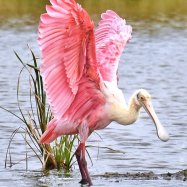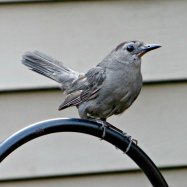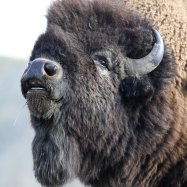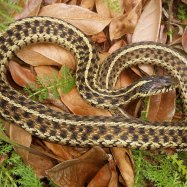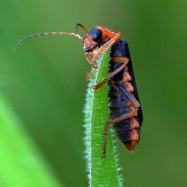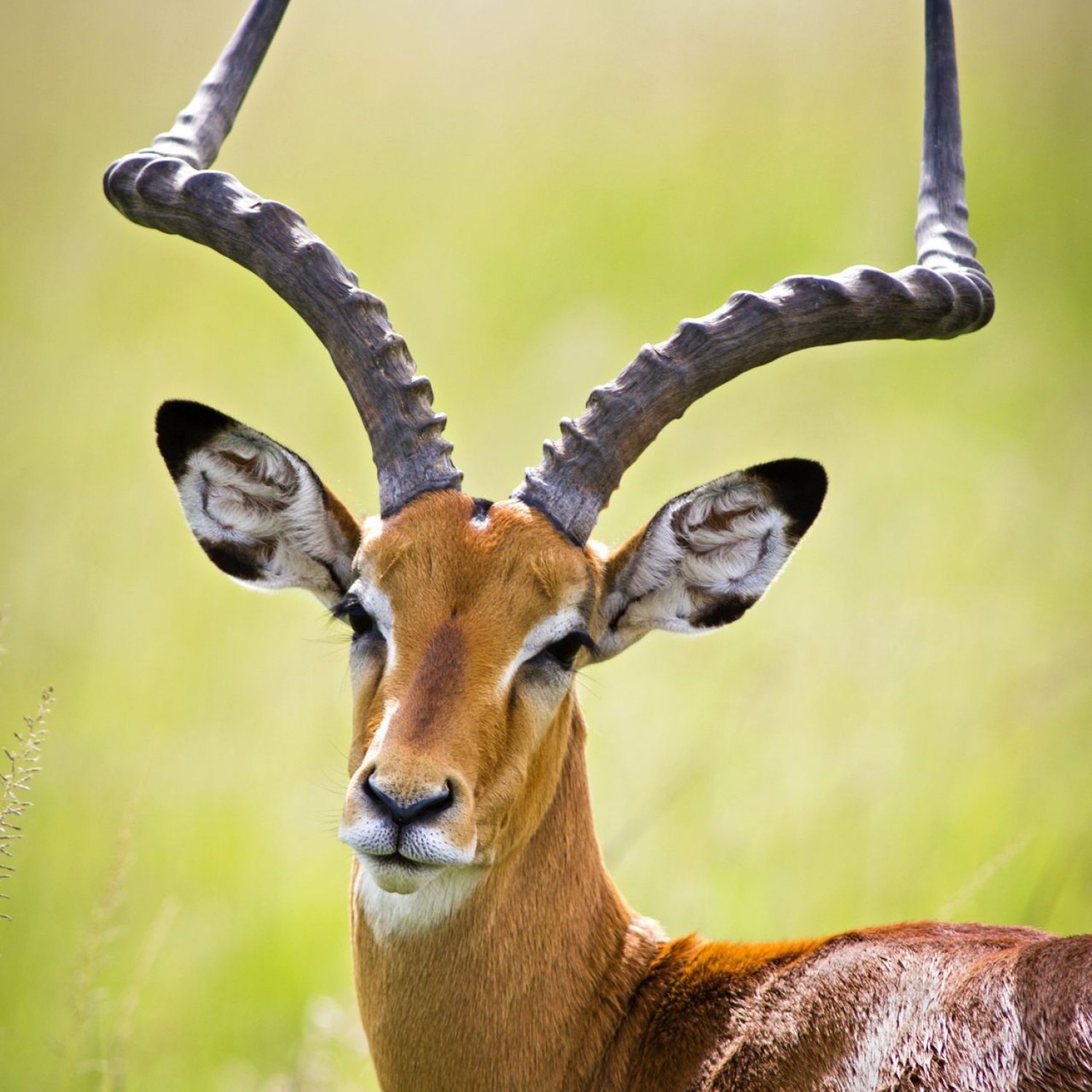
Antelope
100 to 130 cm
Antelopes are beautiful animals found in the western and central parts of North America. Their sleek and slender bodies measure 100 to 130 cm in length. Belonging to the family Antilocapridae, these graceful creatures are a sight to behold in the wild. Visit these areas to witness the majesty of the antelopes up close. #Antelope #Wildlife #NorthAmerica #Nature
Animal Details Summary:
Common Name: Pronghorn Antelope
Kingdom: Animalia
Habitat: Grasslands, shrublands, deserts
The Pronghorn Antelope: The Swiftest and Most Endangered Mammal in North America
As far as animal names go, the pronghorn antelope may not be the most creative. In fact, you may be forgiven for confusing it with a regular antelope upon first hearing its name. However, this remarkable creature is like no other. It is, in fact, not even related to the antelope species found in Africa and Eurasia Antelope. The pronghorn antelope, also known by its scientific name Antilocapra americana, is a unique species that stands out among the diverse wildlife of North America.A Beast unlike Any Other Inhabitant of North America
The pronghorn antelope is a one-of-a-kind species that has captured the fascination and curiosity of many. Its striking appearance and incredible abilities make it a captivating subject of study for researchers and nature enthusiasts alike. Found primarily in the western and central parts of North America, this animal has a long-standing history on the continent, with evidence of its presence dating back to the Ice Age.The name "pronghorn" comes from the forked (pronged) horns that are unique to this species. The horns, which are found on both males and females, can grow up to 30 cm long. These distinctive horns are actually made of keratin, the same material found in human fingernails. The horns of male pronghorns tend to be larger and have a more prominent hook-like shape compared to the shorter and straight horns of the females.
A Brief Taxonomy of the Pronghorn Antelope
Before diving into the remarkable characteristics and abilities of the pronghorn antelope, it is important to understand its classification and how it fits into the greater ecosystem of North America Archelon Turtle. This animal belongs to the Animalia kingdom, which encompasses all animals. In the Chordata phylum, it is classified as a mammal, a group of warm-blooded animals with fur or hair, mammary glands, and a four-chambered heart. The pronghorn antelope is further classified in the Artiodactyla order, which includes hoofed animals with an even number of toes on each foot.However, what truly sets the pronghorn antelope apart is its family, Antilocapridae, which is made up of only one other species – the critically endangered Arabian oryx. This makes the pronghorn antelope one of the only two surviving members of its family in the world.
The Habitat of the Pronghorn Antelope
The pronghorn antelope's natural habitat includes open grasslands, savannas, shrublands, and deserts. However, they are most commonly found in the wide-open spaces of the western and central parts of North America. Due to their high adaptability, they can thrive in different environments, including mountainous regions, as long as there is enough food and shelter available.One notable feature of the pronghorn antelope is its keen sense of sight. Its eyesight is estimated to be eight times better than that of humans, allowing them to easily spot predators from a distance. This visual acuity also helps them navigate their habitat and locate food sources.
A Herbivore with Unique Eating Habits
The pronghorn antelope is a herbivore, which means that it solely relies on plants for its diet. However, unlike other herbivores that feed on a wide variety of plants, the pronghorn antelope is more selective. They primarily feed on grasses, sagebrush, and cacti. They have also been known to dig for nutritious roots and tubers during the winter months when food sources are scarce.One interesting fact about the pronghorn antelope is that they have a unique digestive system that allows them to digest a high-fiber diet. This gives them a competitive advantage over other grazing animals, as they can consume tough, fibrous plants that are not suitable for other herbivores.
The Swiftest Land Animal in North America
If you were to spot a pronghorn antelope running across the plains, you would be amazed at how fast and effortlessly they move. They have been recorded reaching speeds of up to 97 km/hour, making them the fastest land mammal in North America and second only to the cheetah in the entire animal kingdom.This incredible speed is a result of their remarkable body structure. Unlike most other hoofed animals, the pronghorn antelope's foot is adapted for both running and jumping. They possess a unique mechanism that allows them to absorb and store energy in their tendons, enabling them to maintain their high speed for extended periods.
A Colorful and Sleek Appearance
As mentioned earlier, the pronghorn antelope is not related to the antelope species found in Africa and Eurasia. However, they do share a similar slender and sleek body shape. This is an adaptation for speed and agility, allowing them to outmaneuver predators in their natural habitat.The pronghorn antelope's body is covered in a light brown to reddish-brown coat, perfectly blending in with the colors of their natural environment. Their underbelly, throat, and rump are white, providing a striking contrast to their body color. This coloration also acts as effective camouflage, making it difficult for predators to spot them while they are lying down in the tall grass.
The Life of a Pronghorn Antelope
Pronghorn antelopes are social animals and are usually found in herds of 10 to 20 individuals. However, during the winter months, these herds can reach up to 600 members. These herds consist of females and their young, with male pronghorns living in bachelor groups until the breeding season.The breeding season for pronghorn antelopes is in the fall, and it is during this time that male pronghorns fiercely compete for the opportunity to mate with females. In a ritual known as "pronging," male pronghorns will lock horns and push each other in a show of strength and dominance. The male that successfully wins over the female will become the leader of the herd, and the breeding will occur shortly after.
Females give birth to one or two offspring at a time, after a gestation period of approximately 9 months. The young are weaned after 3 to 4 months and follow their mothers in the herd. These young antelopes are incredibly fast learners and can outrun predators within hours of being born.
A Threatened Species: The Pronghorn Antelope's Conservation Status
Despite being one of the most iconic and valued species in North America, the pronghorn antelope faces many conservation challenges. Historically, their population had declined due to factors such as hunting, habitat loss, and diseases. However, their ability to adapt to various environments has allowed them to make a comeback.Currently, the pronghorn antelope is listed as a species of "least concern" by the IUCN Red List. However, this does not mean they are completely safe from extinction. In some states, such as California, they have been designated as a species of special concern, and in certain areas of their range, they are considered endangered. This is mainly due to habitat fragmentation and conflicts with humans, such as road accidents and competition for grazing land.
Conservation efforts are in place to protect the pronghorn antelope, with measures such as limiting hunting and implementing wildlife corridors to ensure the connectivity of their habitat. However, continuous monitoring and proper management are crucial for their long-term survival and to prevent them from becoming another extinct species.
An Unforgettable Sight
In conclusion, the pronghorn antelope is a beast like no other in North America. Its unique features, impressive abilities, and remarkable adaptability have captivated nature lovers for centuries. However, the swift and agile pronghorn antelope is facing conservation challenges that threaten its future. It is our responsibility to ensure that this majestic animal remains a vital part of the North American ecosystem and continues to grace the open plains for generations to come. So, if you ever find yourself in their natural habitat, be sure to keep an eye out for this unforgettable sight – the pronghorn antelope.

Antelope
Animal Details Antelope - Scientific Name: Antilocapra americana
- Category: Animals A
- Scientific Name: Antilocapra americana
- Common Name: Pronghorn Antelope
- Kingdom: Animalia
- Phylum: Chordata
- Class: Mammalia
- Order: Artiodactyla
- Family: Antilocapridae
- Habitat: Grasslands, shrublands, deserts
- Feeding Method: Herbivore
- Geographical Distribution: North America
- Country of Origin: United States, Canada, Mexico
- Location: Western and central parts of North America
- Animal Coloration: Light brown to reddish-brown
- Body Shape: Sleek and slender
- Length: 100 to 130 cm
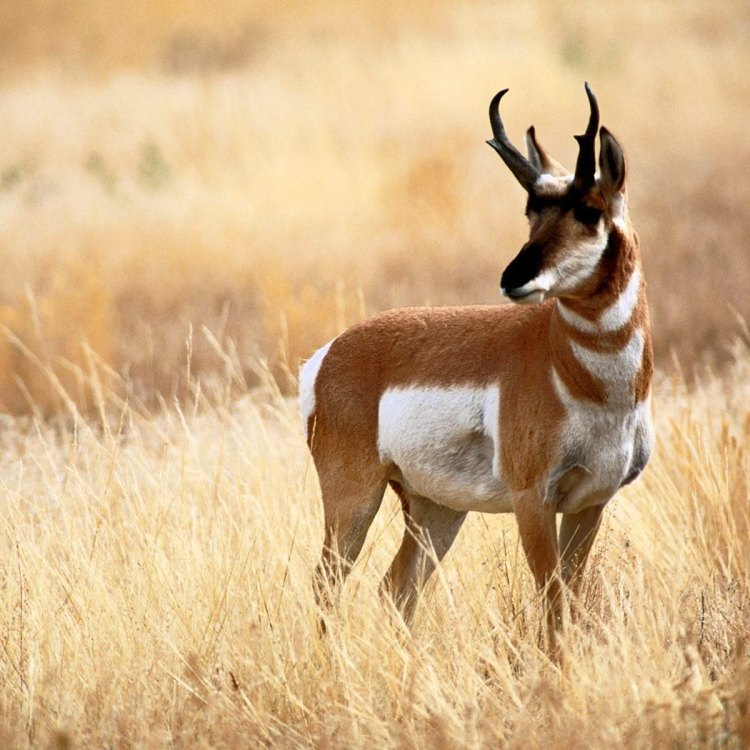
Pronghorn Antelope
- Adult Size: Height at shoulder: 80 to 110 cm
- Average Lifespan: 10 to 15 years in the wild, up to 20 years in captivity
- Reproduction: Sexual
- Reproductive Behavior: Polygynous
- Sound or Call: Loud snort
- Migration Pattern: Migratory
- Social Groups: Small herds
- Behavior: Fast runners, can reach speeds up to 60 mph (97 km/h)
- Threats: Loss of habitat, hunting
- Conservation Status: Near Threatened
- Impact on Ecosystem: Important seed dispersers
- Human Use: Hunting, ecotourism
- Distinctive Features: Large, branched horns; large eyes
- Interesting Facts: Not actually an antelope; fastest land animal in North America
- Predator: Coyotes, wolves, bobcats
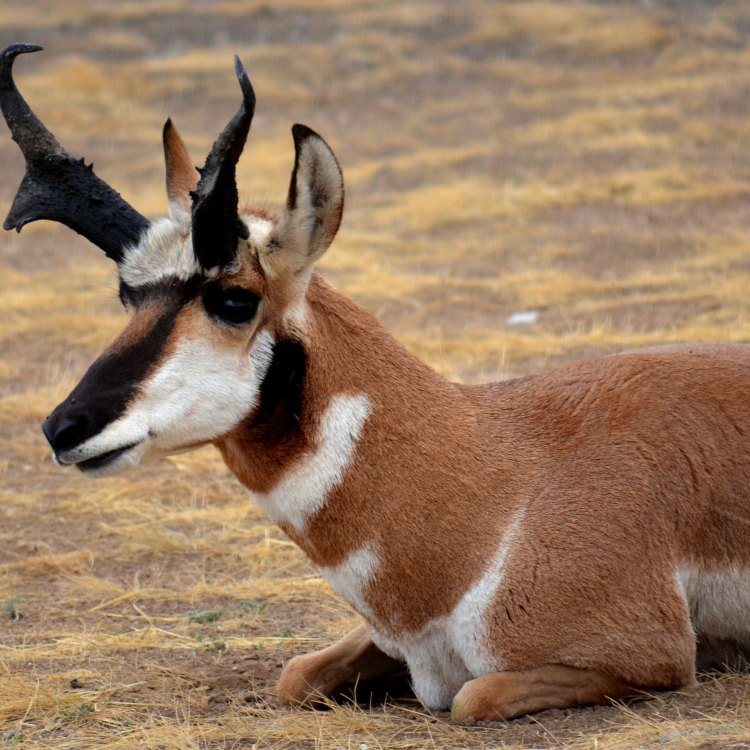
Antilocapra americana
Exploring the Fascinating World of Antelopes: The Fastest Land Animals in North America
Antelopes are majestic and fascinating creatures, known for their incredible speed and distinctive appearances. Often mistaken for deer or goats, these animals have their own unique characteristics and play a vital role in their ecosystems. In this article, we will delve into the world of antelopes, from their physical characteristics to their behaviors, threats, and human use.So, what exactly is an antelope? Contrary to popular belief, antelopes are not a specific species but a diverse group of herbivorous mammals PeaceOfAnimals.Com. They belong to the family Bovidae, which also includes goats, sheep, and cattle. Antelopes are found in various habitats such as grasslands, savannas, and deserts, primarily in Africa and Asia. However, there is one exception - the pronghorn antelope, which is the only species of antelope native to North America.
Physical Characteristics
The size of an adult antelope can vary depending on the species. However, the pronghorn antelope, the only species found in North America, can grow up to 80 to 110 cm (31 to 43 inches) in height at the shoulder. They have a lean and athletic build, with long legs and a small head. Antelopes are easily distinguishable by their large, branched horns that can grow up to 40 cm (16 inches) in length. Interestingly, both male and female antelopes have horns, with males having larger and more impressive ones.
Another distinctive feature of antelopes is their large eyes, which give them excellent vision Asian Vine Snake. This is crucial for their survival as it helps them spot predators from a distance. Due to their excellent vision, they are also able to navigate through their surroundings with ease, making them fast and agile runners.
Reproduction and Behavior
Antelopes are social animals and are usually found in small herds consisting of females, their young, and a dominant male. This male is responsible for mating with multiple females and ensuring the survival of the herd. This type of mating behavior is known as polygyny.
Sexual reproduction is the main mode of reproduction for antelopes, with females giving birth to one or two offspring at a time. The breeding season for most antelope species occurs during the rainy season, ensuring that there is plenty of food for the young ones to survive. However, the pronghorn antelope has an interesting reproductive behavior - they are able to delay the development of their embryos, ensuring the birth of their young in favorable conditions.
The Fastest Land Animal in North America
One of the most impressive and well-known traits of antelopes is their speed. Among all land animals in North America, the pronghorn antelope holds the record for being the fastest. They are able to reach speeds of up to 60 mph (97 km/h) in short bursts, making them an incredibly agile and elusive prey for predators. Their long legs and lean bodies are perfectly designed for running, allowing them to escape danger in mere seconds.
Threats and Conservation Status
Despite their incredible speed and agility, antelopes face numerous threats from human activities. Loss of habitat due to agriculture, mining, and urban development is a significant threat to their survival. As herbivores, antelopes rely on grasslands and savannas for food, and with the shrinking of these habitats, they struggle to find enough resources to survive.
Hunting is another major threat to antelopes, with some species being hunted for their meat and others for their horns, which are believed to have medicinal properties in some cultures. This has led to a decline in their populations, putting many antelope species in danger of extinction. In fact, the IUCN Red List of Threatened Species lists nine antelope species as "Critically Endangered" and six as "Endangered."
The Impact of Antelopes on Ecosystems
Antelopes play a crucial role in their ecosystems as seed dispersers. As they roam through their habitats, they consume a variety of plants, and their droppings contain these seeds, which are then scattered across the landscape. This aids in the regeneration of plants and helps maintain a healthy balance in the ecosystem. Without antelopes, there would be a decline in plant growth, leading to a cascading effect on other animals and their habitats.
Human Use of Antelopes
While humans pose a threat to antelopes, they also play a vital role in the lives of these animals. In many regions, antelopes are hunted for meat as a source of food, and in some cultures, their horns are used for medicinal purposes. However, one positive aspect of human use of antelopes is ecotourism. In many African countries, people can go on safari and see these magnificent animals in their natural habitat. This provides a source of income for local communities and encourages conservation efforts.
Interesting Facts About Antelopes
While most people may associate antelopes with Africa, the pronghorn antelope, found in North America, is not actually an antelope. It is often referred to as the "American antelope" despite not being closely related to other antelope species.
Another little-known fact about antelopes is that they are quite loud despite their graceful appearance. When alarmed or during the breeding season, they produce a loud snort that can be heard from a considerable distance. This is believed to warn other herd members of potential danger or to attract a mate.
Predators of Antelopes
As with any other animal, antelopes have their fair share of predators. In Africa, they are preyed upon by lions, leopards, and hyenas. In North America, coyotes, wolves, and bobcats are their main predators. However, their incredible speed and agile movements allow them to escape these predators most of the time.
In conclusion, antelopes are truly remarkable and unique creatures that deserve our admiration and protection. From their impressive speed to their vital role in their ecosystems, they are a crucial part of our natural world. As they face numerous threats, it is our responsibility to ensure their survival for future generations to appreciate and admire these beautiful animals.

The Pronghorn Antelope: The Swiftest and Most Endangered Mammal in North America
Disclaimer: The content provided is for informational purposes only. We cannot guarantee the accuracy of the information on this page 100%. All information provided here may change without prior notice.


